ARA Processing in Pro Tools
Quick Start Guides for DAWs » Quick Start Guide for Pro Tools » ARA Processing in Pro Tools
- Important: Compatibility
- Preparing long files
- Instantiating RePitch on a Clip
- Adding RePitch to a Track
- Docking and Undocking the Plugin Window
- Resizing the RePitch window
- Removing RePitch plugin instances
- Process your Audio
- Selecting a Scale
- Applying a Macro
- Snap Notes to Measured Scale
- How to choose Manual Editing
- Switching Macros
- Rendering your Audio
This section describes basic use of the RePitch Standard plugin with ARA2 in Pro Tools. You can follow this section as a step-by-step guide.
Important: Compatibility
In order to use the ARA version of the RePitch plugin and follow this section of the guide:
- You must be using Pro Tools 2024.06 or later
- You must be using RePitch Standard 1.4.25 or later
If you are not, we recommend updating when possible, or following the Real-Time AAX guide here.
Preparing long files
In order to use the newest ARA workflow in Pro Tools, we will first Seperate the clip at selection with CMD + E (or CTRL + E on Windows). Although RePitch can work with large audio clips that have different start and end points, we are separating the clip for clarity.
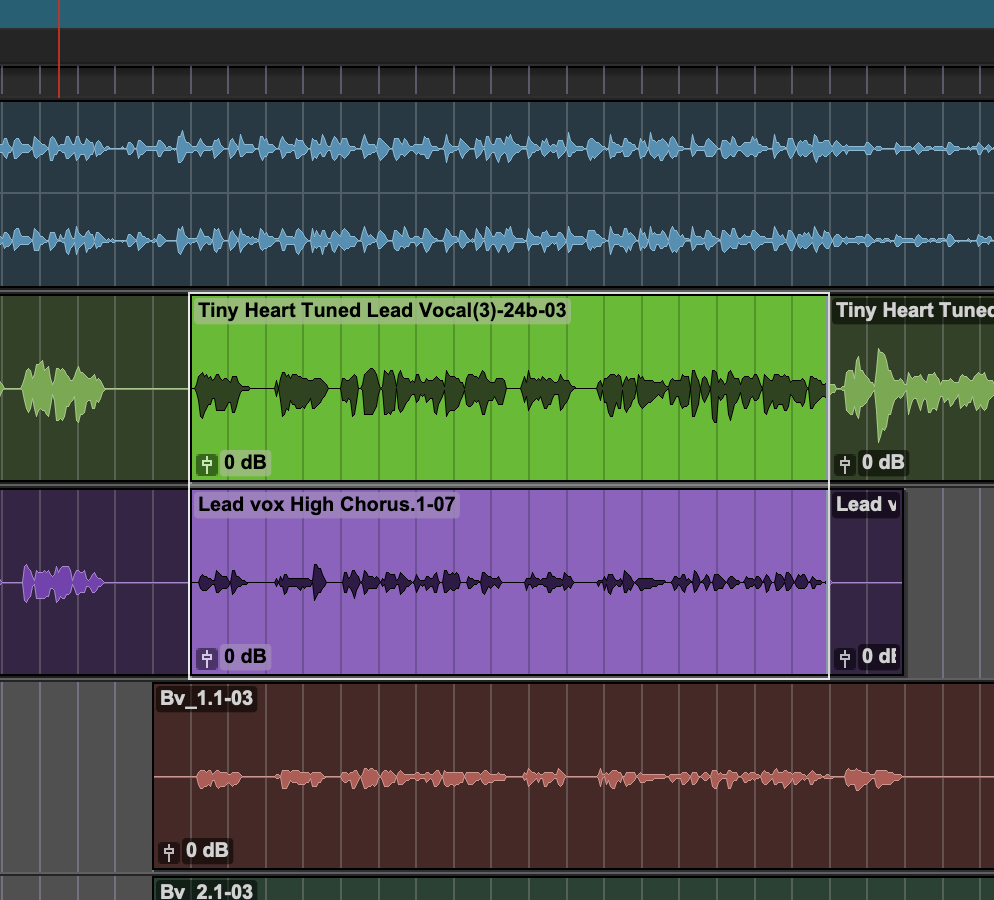
Instantiating RePitch on a Clip
To access RePitch in Pro Tools, we can either:
- Right Click the clip we would like to work on, and then select 'RePitch -> Edit' from the drop down menu
- Select the Clip menu, and then select 'RePitch -> Edit'
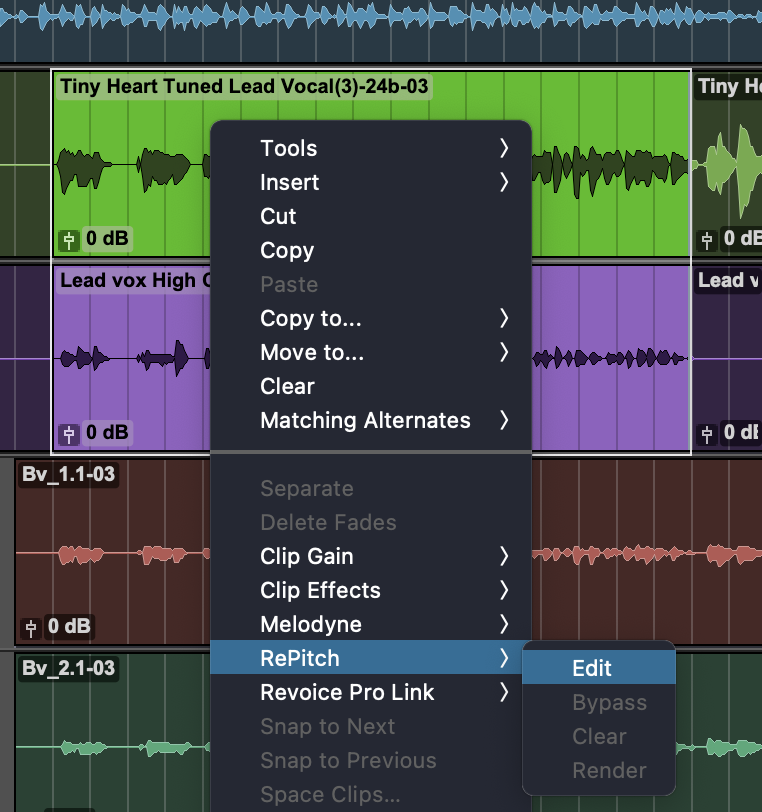 ..... or .....
..... or ..... 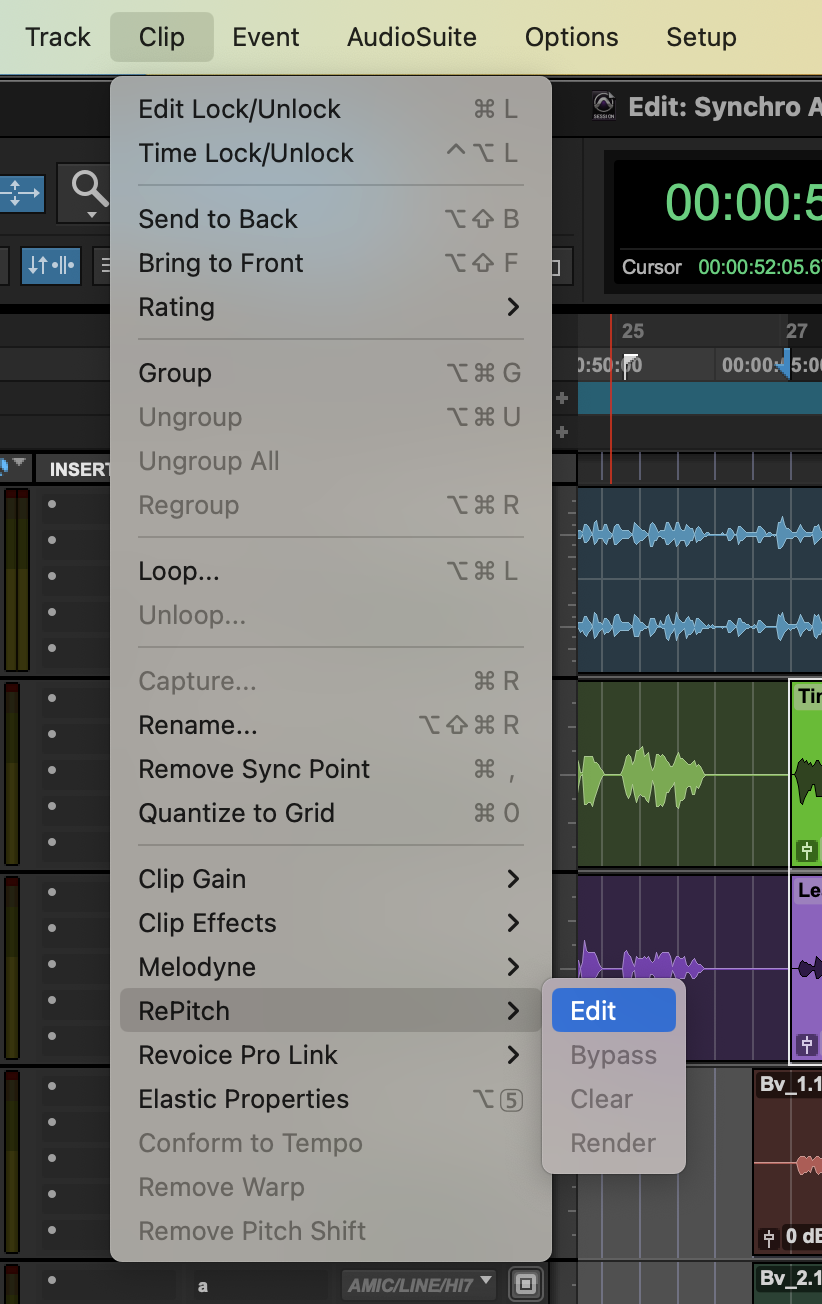
Adding RePitch to a Track
RePitch can also be added to an entire track using the Elastic Audio/ARA Plugin Selector menu indicated below, or the File -> Track menu or Track right click menu.

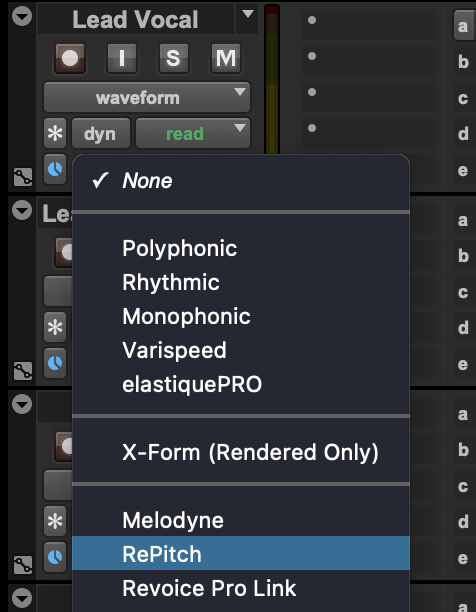
Any of the above methods will add RePitch and open the plugin window.
Docking and Undocking the Plugin Window
The RePitch plugin will first appear docked in the Pro Tools Edit Window at the bottom of the DAW.
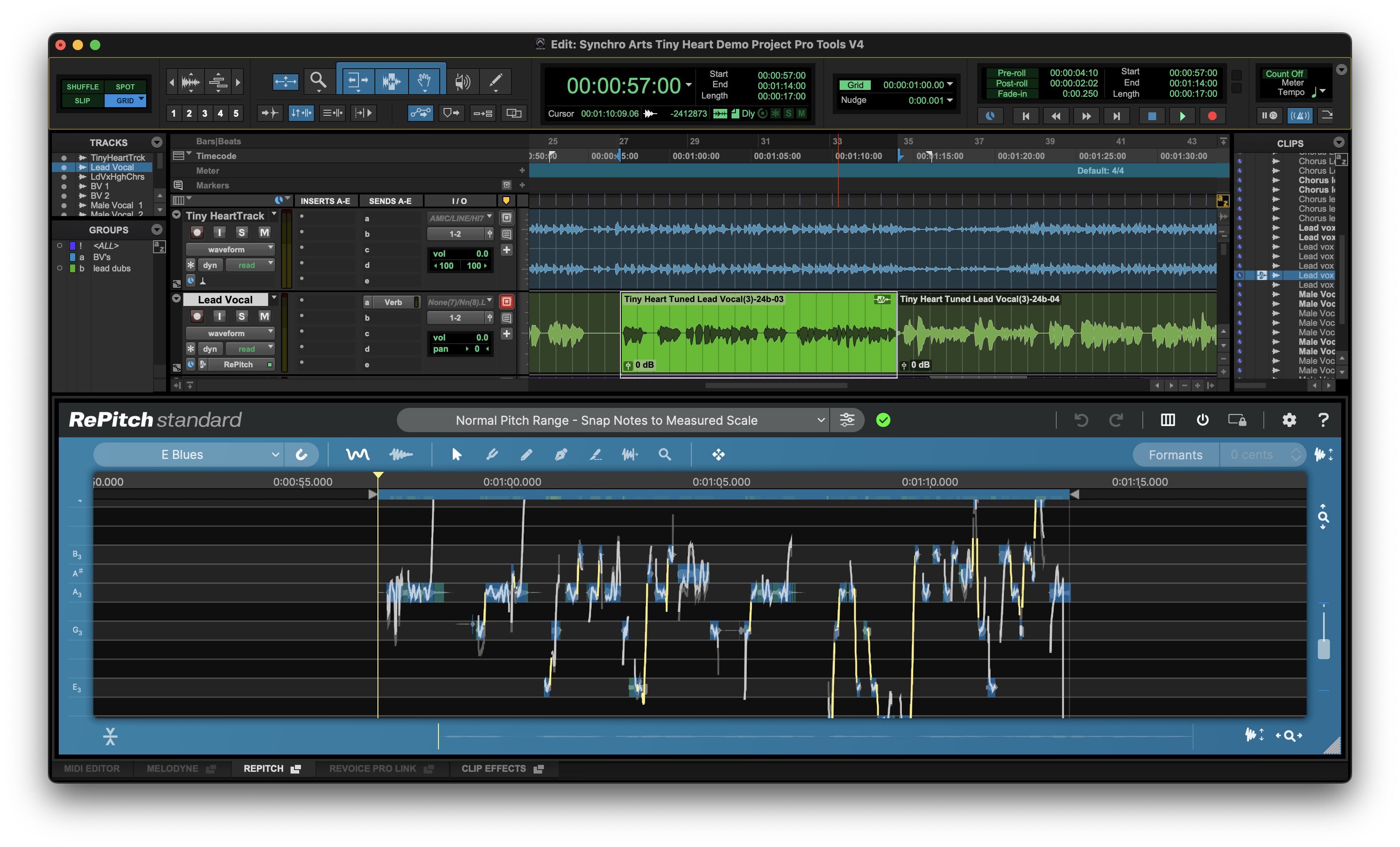
If you do not see the plugin window, click the RePitch edit window tab shown below.
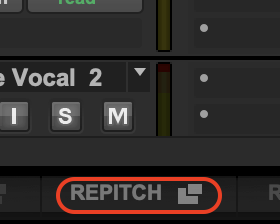
To undock the plugin window, click the undock button in the edit window tab list shown below.
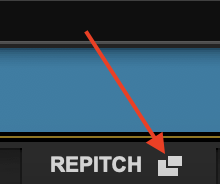
For the remainder of the guide, we will be working with the plugin window undocked. This is a personal preference and has no effect on functionality.
Resizing the RePitch window
If RePitch is unpinned from the Edit section of your DAW interface, you can resize it to almost any size by dragging the corners or edges of the plug-in window.
Removing RePitch plugin instances
RePitch, like other ARA plugins in Pro Tools, can only be removed from the entire Track.
To remove RePitch from a track, click the ARA symbol in the corresponding track's controls, indicated by the red arrow below.
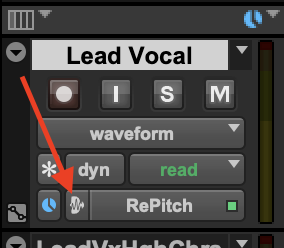
Then select 'None' from the menu that appears.
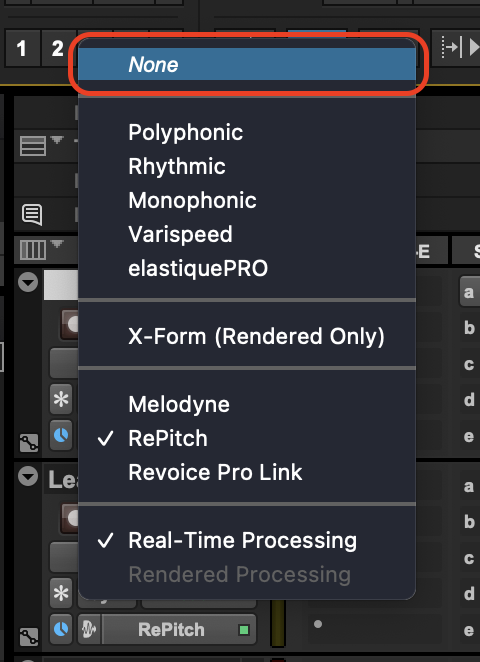
Process your Audio
In order to process our audio, we will select a Scale and a Macro. These options define how RePitch will process our audio. There are Macros available for many common use-cases. Users can also create and save their own Macros. Macros are described further in this section.
Selecting a Scale
In order to quickly tune our selected vocal, we will use one of RePitch's built in Macros.
First, we will select the Chromatic scale from the Scale menu in RePitch.
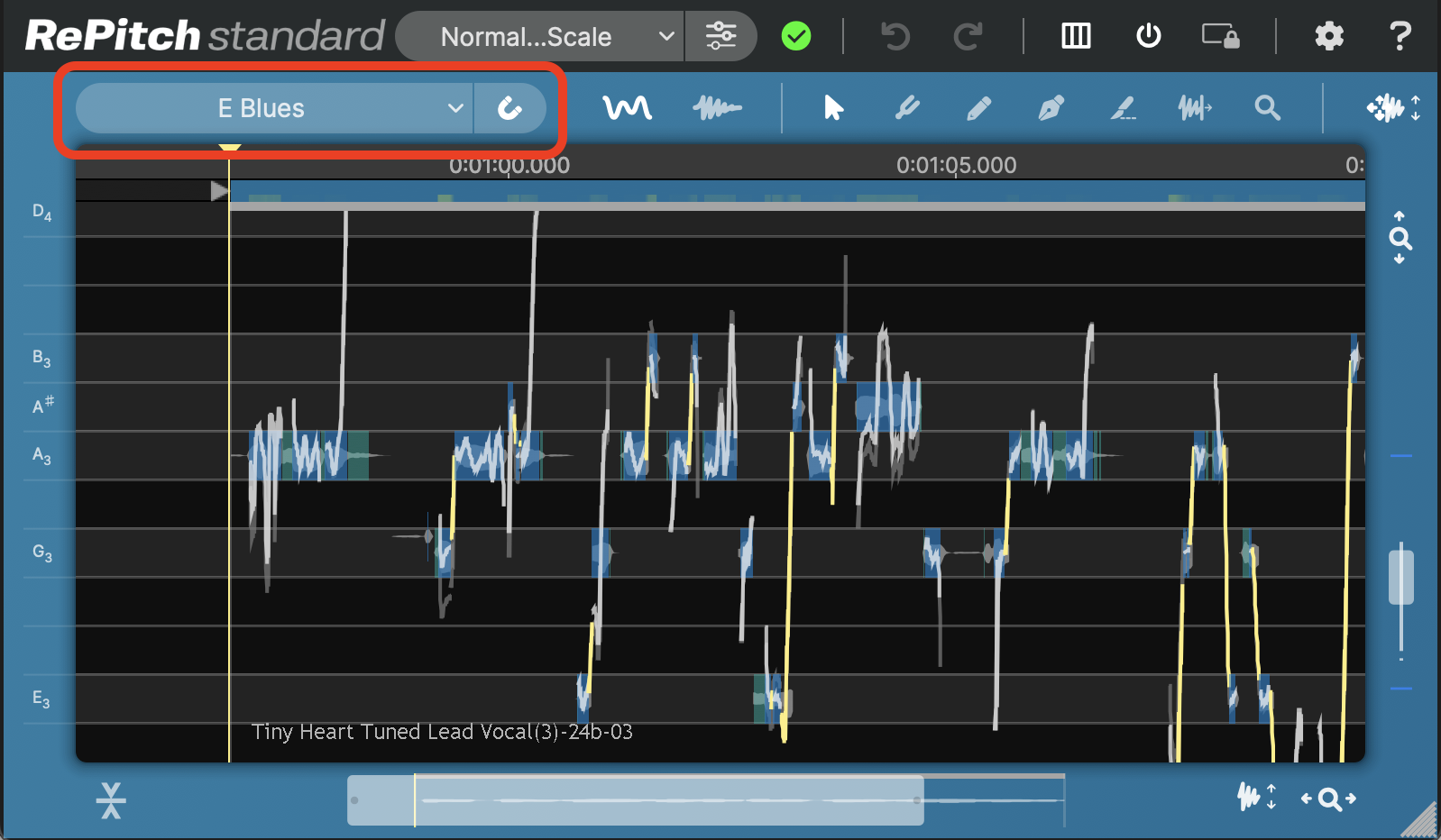
Clicking the drop down menu will show our current available scales. You can select the 'Scales...' item to add scales to this list later. For now, choose Chromatic.
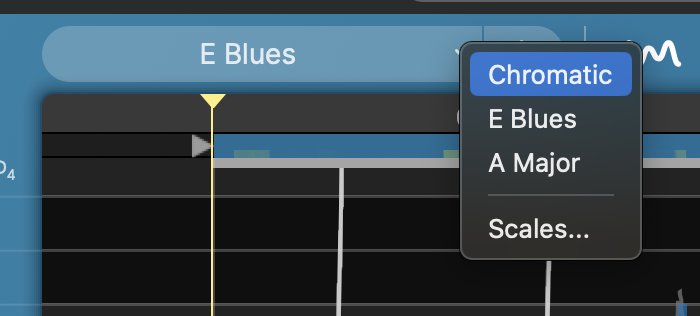
Applying a Macro
Next, select a Macro from the Macro drop down menu. The Macro menu is at the top of the RePitch plugin window, highlighted below in red.

From the drop down, we'll select 'Normal Pitch Range > Snap Notes to Selected Scale'. This will tune our audio to the nearest chromatic pitch.
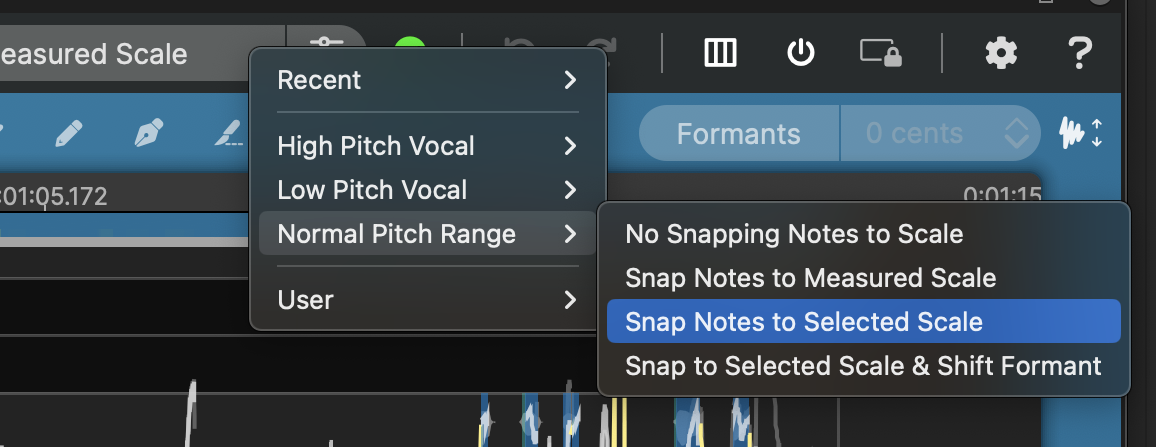
In the picture below, RePitch has processed the captured audio based on the currently selected Macro, so the blue note blocks are shown automatically centered (tuned) in the Note Lanes of the Chromatic Scale.
The white lines show the new pitch pattern and the faint red pitch lines show the original pitch.
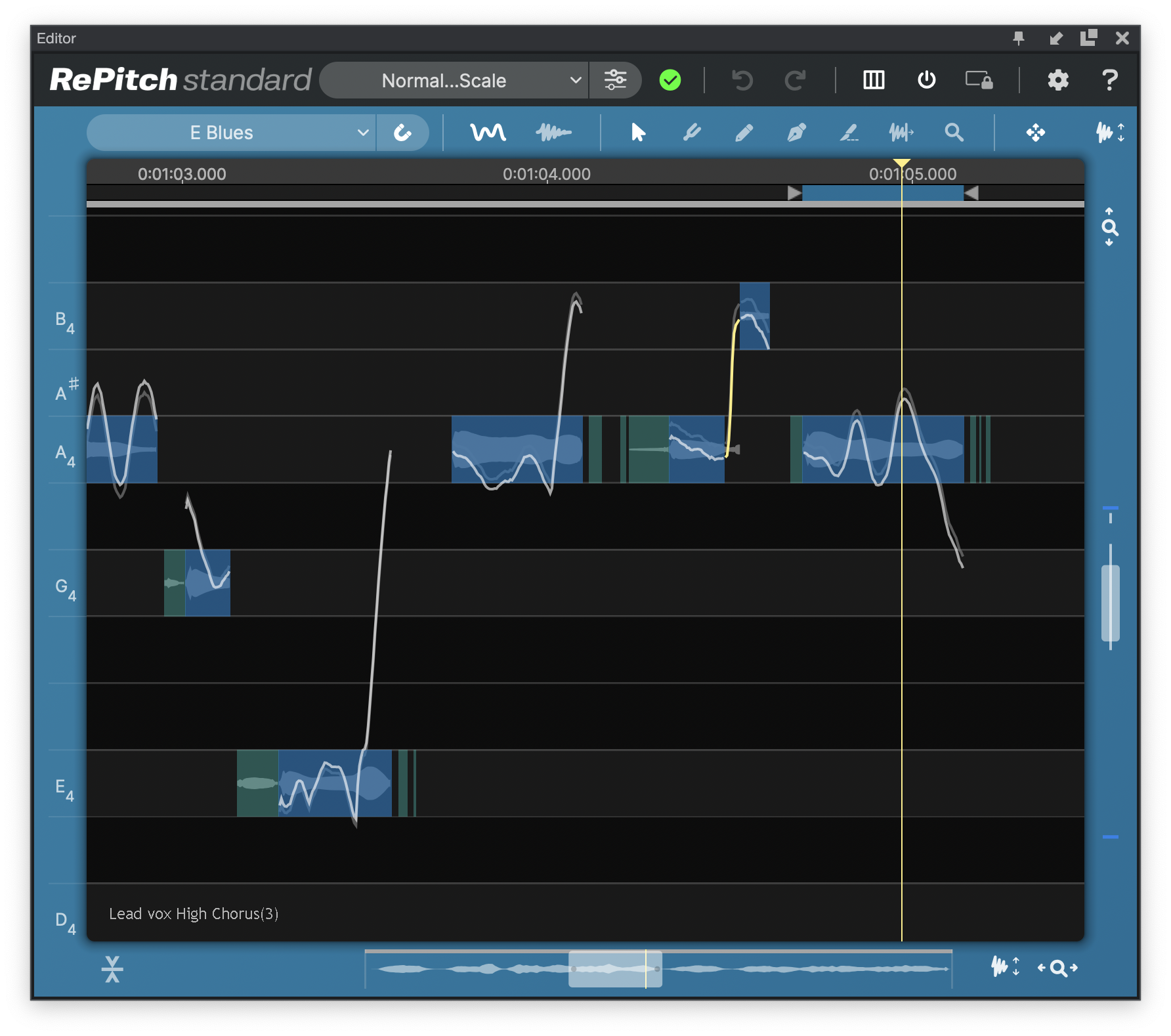
Snap Notes to Measured Scale
You could have also chosen the Macro below
Normal Pitch Range - Snap Notes to Measured Scale
This Macro would automatically detect the most likely tonic and scale from the notes in your audio track, and then move the detected note blocks in your audio to that Measured (i.e. detected) scale's note frequencies.
If you want to add your own Scale to be selected and tuned to, simply click the Scale display control shown below

and when this menu opens

Click Scales... and you'll see the window below
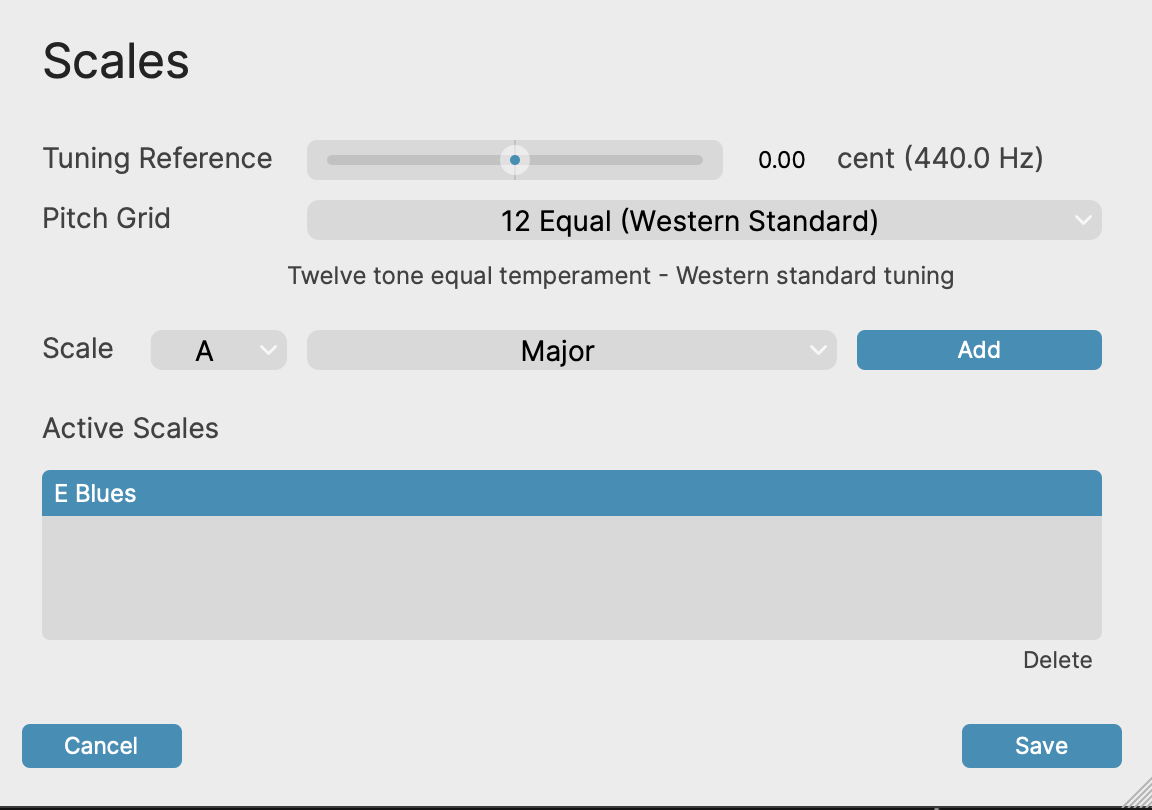
In the line that says Scale at the left, click the drop down menus to add your Tonic and Scale Mode and then click Add and then Save.
Your added scale should now be in the Scale window.
Now make sure the Macro is set to Snap Notes to Selected Scale and all further audio captures will use that scale and Macro automatically.
How to choose Manual Editing
Generally, you'll want to select one of two primary automatic tuning options above. However, the 'No Snapping Notes to Scale' macro shown below applies no automatic processing, leaving you free to make manual changes.

It's important to understand that once you've selected a Macro, you can change the Macro or Scale before you use it on the next captured audio or before you re-run the new Macro on the captured audio.
Switching Macros
If you have already run a Macro, switching to another Macro and running it by clicking "yes" in the window below will always discard all existing processing, so you will see the confirmation dialog below
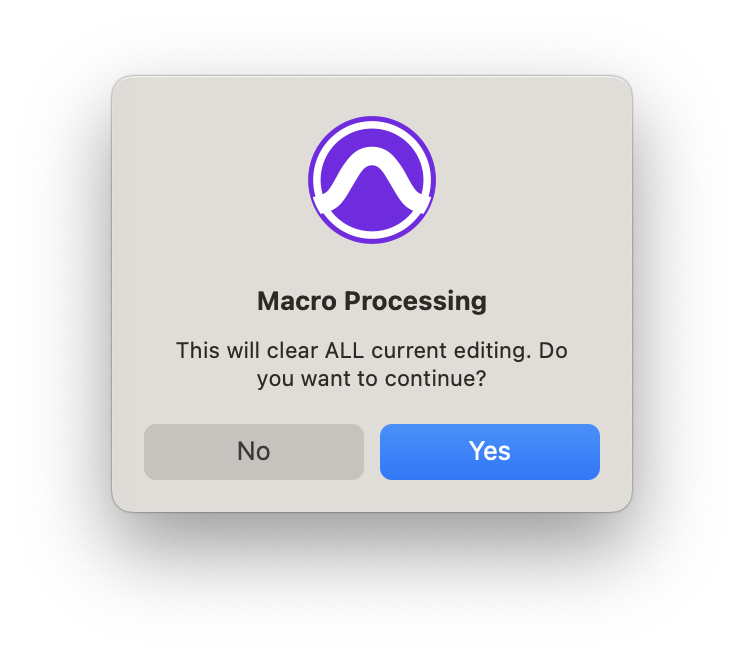
If you’ve not done any manual editing or want to start over, click YES.
If you click NO, you will see the changes made on screen, which will show the Scale and setting to be used in the next application of RePitch's processing, whether with a Macro or Right Click menu.
Macros are described further in this section.
Rendering your Audio
In order to Render your processed audio, you can either:
- Right Click the clip and select 'RePitch > Render'
- In the Clip drop down menu, select 'RePitch > Render'
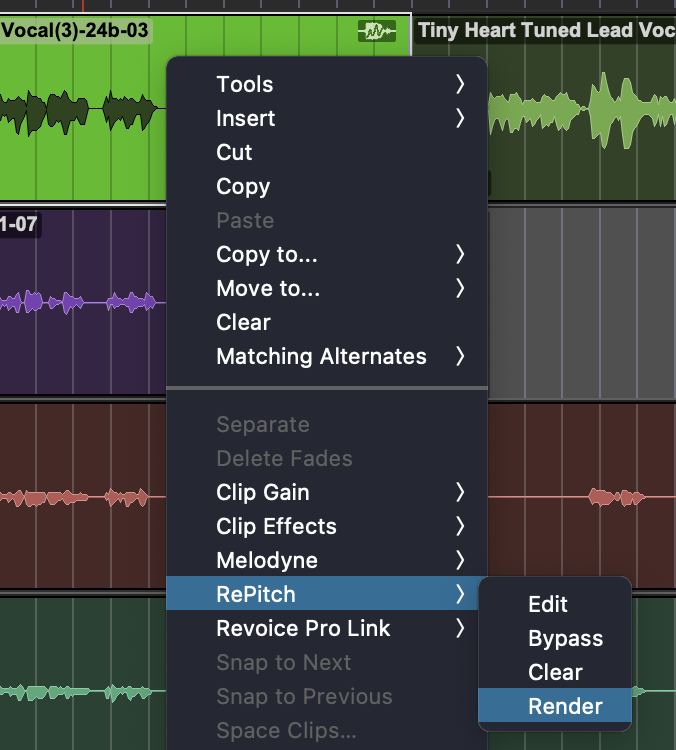 .... or ....
.... or .... 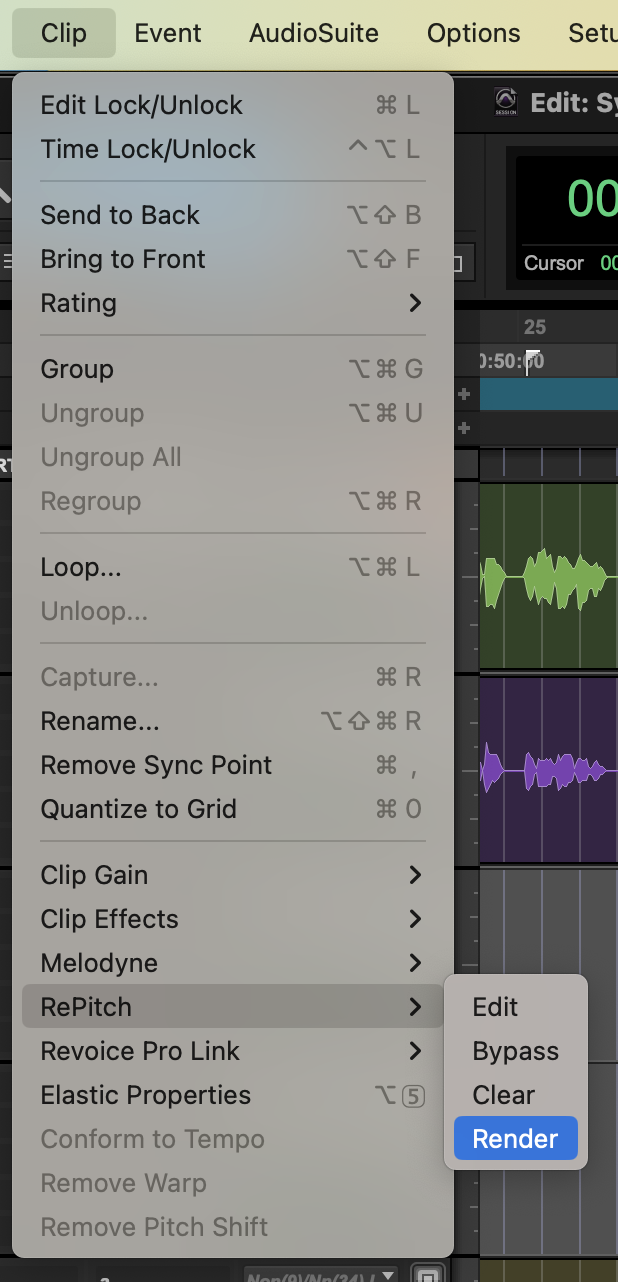
Copyright © 2023 by Synchro Arts Ltd All Rights Reserved.